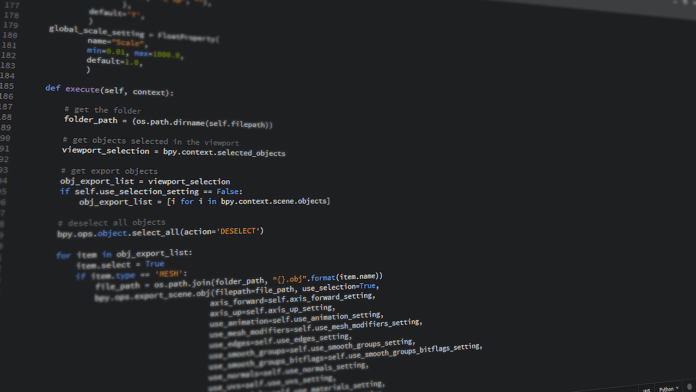In a business world where things can change quickly, risk management becomes an important part of any successful company. The use of sophisticated tools and technologies to identify, measure, and reduce risk is required due to the dynamic nature of risks and the growing complexity of business ecosystems. Python has made big steps forward in this area thanks to its powerful features. It is changing how businesses deal with risks and unknowns because of its role in risk management. This language, which is renowned for its simplicity and dependability, is assisting in the development of cutting-edge approaches to risk management in various sectors. In the parts that follow, we’ll look more closely at how Python is coordinating this change and providing a solid foundation for risk identification, measurement, mitigation, and control.
Python: A Powerful Tool for Risk Management
Many of the world’s top businesses have adopted the use of Python in risk management as a strategic move, not just as a trend. Python is a popular choice for risk management due to its simplicity, scalability, and vast libraries. It offers reliable data handling, analysis, and visualization tools, making it simpler for risk managers to understand large data sets and make wise choices. Python’s compatibility with other computer languages and ability to handle sizable data sets make it a useful tool for risk management pros. Python is also open source, making it a language that is ready for the future when it comes to risk management. This allows for regular changes and improvements.
Role of Python in Risk Identification
Understanding Python’s data-handling skills’ versatility is crucial before we look at the specific uses of Python in risk identification. For data handling and analysis, Python’s libraries like NumPy, Pandas, and Matplotlib offer effective tools. Python helps with risk identification in the following ways:
- Data Analysis: Python’s extensive library ecosystem includes effective tools for statistical risk analysis and machine learning, both of which are essential for spotting possible risks in sizable data sets.
- Web Scraping: Python is excellent at web scraping, which lets risk managers get data from many different online sources and expand the range of risk identification.
- Python is also useful for predictive modeling, which makes use of historical data and trends to forecast potential hazards.
- Real-Time Processing: Python’s ability to handle data in real time helps with risk identification and mitigation.
- Python’s familiarity with other computer languages and platforms enables smooth integration with existing systems, ensuring a thorough approach to risk identification.
Beyond just data analysis, Python also plays a role in risk identification. Its adaptability and versatility make it an important tool for people who work in risk management; it provides them with the tools they need to quickly and effectively identify and reduce possible risks.
Python in Risk Quantification and Assessment
Python is great at measuring and evaluating risk because it has many libraries and frameworks that can handle complicated math and simulations. Libraries like SciPy and NumPy offer strong features for statistical analysis and numerical calculations, making it possible to correctly measure risk. Python simplifies and speeds up the Monte Carlo simulation, a complex computer method that uses repeated random sampling to get numbers. This feature makes it easier for risk managers to model error and do stress tests. Python’s machine learning libraries, like scikit-learn and TensorFlow, also let you make models that can predict future risk situations by using data from the past. Python is a complete tool in the realm of risk measurement and assessment thanks to all of these factors.
Python in Risk Mitigation and Control
It for Business has appeared as a major player in the realm of risk mitigation and control. It boasts numerous libraries, such as pandas and matplotlib, that facilitate the manipulation and display of data for effective risk management. Businesses can quickly adapt to changes and implement the necessary risk controls thanks to the language’s clarity and simplicity. Additionally, the integration of Python with advanced machine learning models enables businesses to anticipate possible risk scenarios, allowing them to prepare for unplanned events in advance. Because of this, Python for Business is a crucial part of modern risk mitigation and control techniques.
Real-Life Examples of Python in Risk Management
Many businesses have used Python to manage risks effectively. For instance, financial companies utilize Python-based risk models to forecast market volatility and monitor financial risks. In the same way, Python is used in healthcare to figure out a patient’s health risks based on their medical background and the way they live their lives. Python’s data analysis and control tools help the energy sector identify possible safety risks and put risk control measures in place before they happen. Because of these examples, Python has become a useful tool for businesses in many fields to lower risks and make sure processes run smoothly.
Conclusion
There is no doubt that Python has changed the way risk management is done. Python’s ability to manage and reduce risks will become even more important as businesses continue to operate in an environment that is becoming more unstable. Using Python’s power will open up new options and give businesses the tools they need to do well in risky times. This is the future of risk management. Python is destined to change the risk management scene and become a crucial tool for businesses of all kinds thanks to its easy-to-use interface, extensive range of applications, and ongoing development. Companies that use Python for business can manage risks better and be more successful than their competitors. Why wait then? We encourage you to explore the benefits that Python can offer by integrating it into your risk management plans promptly. Why wait then? We encourage you to explore the advantages of Python by incorporating it into your risk management plans promptly.

